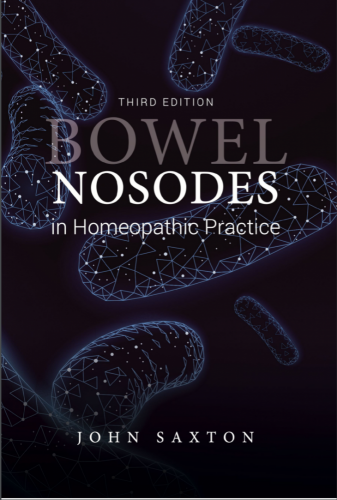The group of eleven homeopathic remedies known as the Bowel Nosodes are unique in both their derivation and the opportunities that they offer. Although they have some indications in acute prescribing, because of the connection and resonance that they have with the miasmatic forces that are active in the body, they are particularly useful in the treatment of chronic disease.
The origin of these remedies lies in human medicine, and there are still major indications in that field. Their development is traced and the concept behind them is explained and discussed within the context of modern homeopathic thought. The general uses of the group in the clinical situation are outlined, and the materia medica of the individual bowel nosodes is discussed. The various methods of using the bowel nosodes are illustrated with nine case histories from the human world and ten from the animal, demonstrating the common guidelines that are applicable to all species. The third edition is revised, expanded and updated.
- Author: John Saxton
- ISBN: 9781908127020
- 195 pages
- Edition: Third
- Paperback
- Published in 2008, 2012, 2020
- Printed in United Kingdom
Reprinted with permission from The Society of Homeopaths (from "The Homeopath" Journal, Spring edition). Reviewed by Robert Bridge.
I was asked to read a book on bowel nosodes written by a vet I greeted the request with bemused curiosity; passionate as I am about these remedies, a veterinary account of them seemed a somewhat obscure undertaking to say the least. I am very glad that my curiosity got the better of me.
John Saxton is a vet with nearly 40 years' experience as homeopath and teacher, a clinician who applies self-evident rigour to all he does. Whether you regard the bowel nosodes as an indispensable part of your clinical toolkit, or dismiss them as the quirky by-product of an embarrassing British obsession, there is much to be gleaned from this book. Saxton details the history of these remedies, through Bach and Paterson to the modern day, and discusses their clinical application as individual remedies and as adjunctive intercurrents. He offers clear and practical materia medicas for all thirteen nosodes, expanding the observations of Paterson and Agrawal with lesser-known authors and his own clinical experience, and includes a much enlarged table of remedy relationships. This alone would more than justify the presence of this book on any homeopath's bookshelf. But it is the eighteen cases, both animal and human, that set this book apart.
In a current climate where there is a trend towards ever-greater complexity of observation and analysis, it is refreshing to find a practitioner going about his business with little more to go on than a woof and a wag and a keenness of eye, and making straightforward prescriptions that do what they intended to do.
Saxton's language is as precisely judged as his observations, distinguished by an economy and elegance that borders on the poetic. Whilst some of this information may not easily translate into our own practices - Saxton's appreciation of his client's anal glands doubtless lies outside our remit - there is much that does, as becomes clear when he turns his attention to his human patients. What is most wonderful about this book is Saxton's candour: at no point does he overegg his prescriptions with extraordinary hindsight: rather the opposite. He is quick to criticise, discuss moments of doubt and muse on whether a different remedy or approach might not have fared better. This is case writing in the tradition of Tyler and Wright-Hubbard - not some self-proclaimed magician dazzling a reader with accounts of life-changing epiphanies, but an honest and modest clinician going about his daily work with clarity and dedication. Thank you Mr Saxton.
Reprinted with the permission of The Homeopathic Links Journal, Volume 22, Winter 2009. Reviewed by Petra Wood, UK.
This book is a fantastic resource to make the bowel nosodes more accessible for chronic prescribing. It is clear that the author has a deep understanding of these remedies - an understanding that comes from thorough research as well as clinical application.
The first chapters are dedicated to the origins and development of the bowel nosodes and their practical implications. Then follows a chapter with guidelines of how to apply bowel nosodes in practice, e.g. as a remedy in their own right, to clear a symptom picture or when a well-selected remedy fails to act.
The real benefit of the book, however, lies in the materia medica of the individual bowel nosodes. For each of the major bowel nosodes the author gives clear mental and emotional pictures which help to create a real feel for the essence of these remedies. It allows for a true understanding of the potential of the bowel nosodes, rather than prescribing solely on pathology and relationship to other remedies.
Each chapter concludes with cases, both from the human and the veterinary practice. These cases serve well to illustrate the use of the bowel nosodes according to the guidelines given in previous chapters.
In the appendix we find a list of all remedies associated with the different bowel nosodes, as per clinical application. The book offers a very comprehensive bibliography and a good index for easy access.
Personally I would have liked to see more of the information laid out in tables for the ease of visual access and quicker differentiation. The editing is poor at times with references to chapters or cases which cannot be found. The typing errors do not help either. But these are minor complaints, which can easily be corrected in a future edition of a book that should be on every homeopath's bookshelf.

